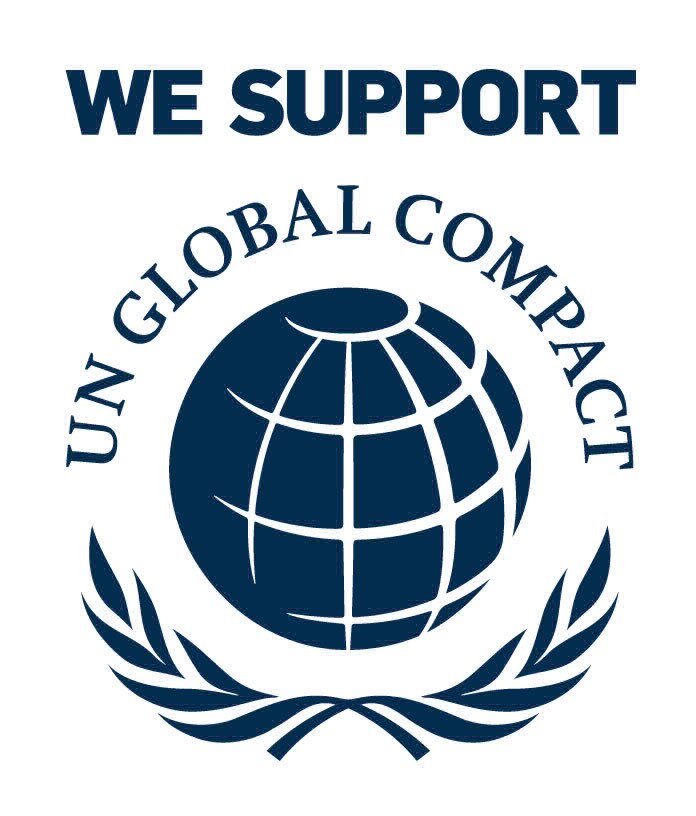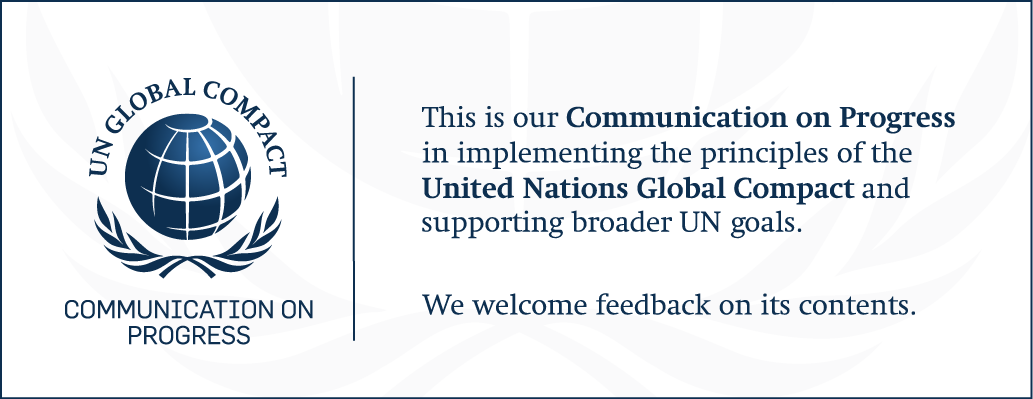
Reporting Framework
UNGC Advanced-level reporting
Electrolux endorses the United Nations Global Compact (UNGC) and its ten principles on the environment, labor practices, human rights and anti-corruption. Electrolux is also a signatory of the UNGC Water Mandate.

This UNGC Communication on Progress is aligned with the UNGC's Advanced level of reporting. Where applicable, the below table indicates where readers can find examples of how Electrolux meets best practice levels with regard to the criteria for reporting as defined by the UNGC. The left-hand column indicates their information requirements. The areas that are marked in grey italic text under each criterion are not addressed in the report.
Electrolux reports in accordance with the United Nations Guiding Principles on the Business and Human Rights reporting framework. A separate index has been created to guide readers to the relevant areas in the report that address human rights.
The 2018 Sustainability Report and the 2018 Annual Report reflect our commitment to these principles and the efforts to continuously improve performance. The 2018 Sustainability Report is third party assured.
See the enclosed Assurance Statement for information on the scope of assurance.

Implementing the ten principles into strategies and operations
| UN Global Compact Advanced Criteria | References |
|---|---|
Criterion 1: The COP describes mainstreaming into corporate functions and business units.
| |
Criterion 2: The COP describes value chain implementation
|
Human Rights Management Policies & Procedures
| UN Global Compact Advanced Criteria | Reference |
|---|---|
Criterion 3: The COP describes robust commitments, strategies or policies in the area of human rights
| |
Criterion 4: The COP describes effective management systems to integrate the human rights principles
| Understanding and managing our human rights risks |
Criterion 5: The COP describes effective monitoring and evaluation mechanisms of human rights integration
| Improve sustainability in the supply chain Stakeholders inform our approach |
Robust Labour Management Policies & Procedures
| UN Global Compact Advanced Criteria | References |
|---|---|
Criterion 6: The COP describes robust commitments, strategies or policies in the area of labor
| Understanding and managing our human rights risks Always act ethically and respect human rights |
Criterion 7: The COP describes effective management systems to integrate the labor principles
| Understanding and managing our human rights risks Stakeholders inform our approach |
Criterion 8: The COP describes effective monitoring and evaluation mechanisms of labor principles integration
| Always act ethically and respect human rights Stakeholders inform our approach |
Environmental Management Policies and Procedures
| UN Global Compact Advanced Criteria | References |
|---|---|
Criterion 9: The COP describes robust commitments, strategies or policies in the area of environmental stewardship
| |
Criterion 10: The COP describes effective management systems to integrate the environmental principles
| |
Criterion 11: The COP describes effective monitoring and evaluation mechanisms for environmental stewardship
| VP Statement: Embedding sustainability into our operations to drive performance CEO Statement: Our transformation into a more purpose-driven company Improve sustainability in the supply chain Internal code of conduct audit findings |
Anticorruption management policies and procedures
| UN Global Compact Advanced Criteria | References |
|---|---|
Criterion 12: The COP describes robust commitments, strategies or policies in the area of anti-corruption
| |
Criterion 13: The COP describes effective management systems to integrate the anti-corruption principle
| Understanding and managing our human rights risks Always act ethically and respect human rights |
Criterion 14: The COP describes effective monitoring and evaluation mechanisms for the integration of anti-corruption
| Always act ethically and respect human rights Internal Code of Conduct audit findings Understanding and managing our human rights risks Annual Report: Note 25 Contingent assets and liabilities |
Taking action in support of broader UN goals and issues
| UN Global Compact Advanced Criteria | References |
|---|---|
Criterion 15: The COP describes core business contributions to UN goals and issues
| Solutions for healthy and sustainable living for more people |
Criterion 16: The COP describes strategic social investments and philanthropy
| |
Criterion 17: The COP describes advocacy and public policy engagement
| Committed to combating climate change Solutions for healthy and sustainable living for more people |
Criterion 18: The COP describes partnerships and collective action
|
Corporate sustainability governance and leadership
| UN Global Compact Advanced Criteria | References |
|---|---|
Criterion 19: The COP describes CEO commitment and leadership
| CEO Statement: Our transformation into a more purpose-driven company VP Statement: Embedding sustainability into our operations to drive performance |
Criterion 20: The COP describes Board adoption and oversight
| |
Criterion 21: The COP describes stakeholder engagement
| Stakeholders inform our approach |
Electrolux
Electrolux shapes living for the better by reinventing taste, care and wellbeing experiences that make life more enjoyable and sustainable for millions of people. Through our brands, including Electrolux, AEG and Frigidaire, we sell more than 60 million household and professional products in more than 150 markets every year.
S:t Göransgatan 143
SE-105 45 Stockholm, Sweden